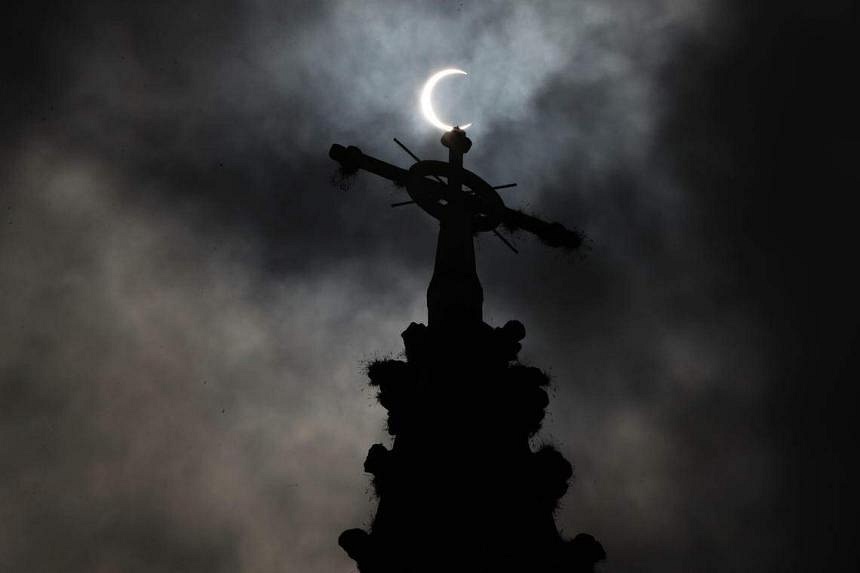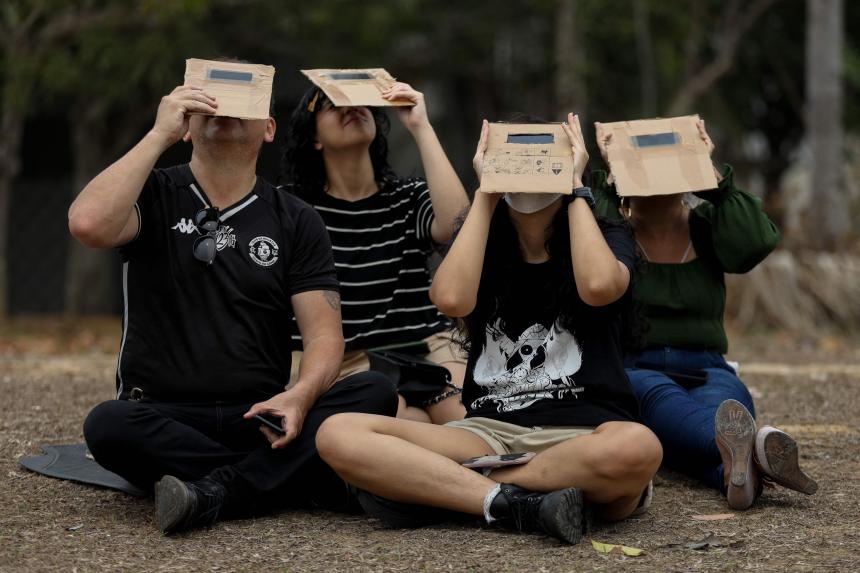ALBUQUERQUE, United States – Skygazers across the Americas turned their faces upwards on Saturday for a rare celestial event: An annular solar eclipse.
A crowd of people wearing protective eyewear gathered in Albuquerque, New Mexico, one of many crowds that gathered across the western United States to watch as the Moon passed between the Sun and Earth at its farthest point from our planet.
Since it was so distant, it did not cover the Sun completely, creating a “ring of fire” effect that brought cheers from the crowd in Albuquerque.
“It’s majestic. We’re in awe,” said viewer Shannon Cozad.
In the course of just a few hours, the most striking “path of the annularity” was crossing a handful of major US cities, including Eugene, Oregon, and San Antonio, Texas, with partial eclipse phases lasting an hour or two before and after.
“It’s kind of like a black hole,” said eight-year-old Mubaraq Sokunbi, who was at a hot-air balloon festival in Albuquerque with his family. “The Moon covers the Sun and then there’s a ring around it.”
At any given location, it was visible for between 30 seconds and five minutes – but people were urged to take safety precautions and use solar viewing glasses, and never regular sunglasses, to preserve their vision.
The eclipse crossed into Mexico and Central America, then into South America through Colombia and northern Brazil before ending at sunset in the Atlantic Ocean.
‘A beautiful memory’
At the Bogota Planetarium in Colombia, a crowd gathered at around noon, holding their breath for the clouds to clear.
When they did – and in time to see the eclipse – some observers shed tears, overwhelmed by emotion.
“It was at first distressing not to be able to see it, then very moving” when it appeared, Ms Xiomara Cifuentes, a 41-year-old civil servant who was there with her husband and their three children, told AFP.
“It will be a beautiful memory,” she added.
It was “a pretty beautiful moment... an indescribable thing, without words”, said university student Jhoan Vinazco, 25, who had never seen an eclipse before.
In the town of Penonome, Panama, about 160km from Panama City, Mr Carlos Ramirez watched the eclipse while dressed as an astronaut – something he dreamt of becoming as a child.
“I found the event here in Panama spectacular,” the 55-year-old tour guide told AFP.
Sounding rockets
The event also serves as a dress rehearsal before a total eclipse set for April 2024.
Both eclipses are going to be “absolutely breathtaking for science”, said Dr Madhulika Guhathakurta, a heliophysics programme scientist.

Solar eclipses have a noticeable effect on the upper atmosphere, including the ionosphere, which is full of charged particles and responsible for reflecting and refracting radio waves.
“Although the atmospheric effects of solar eclipses have been studied for over 50 years, many unanswered questions remain,” said Dr Guhathakurta.

To study these effects, Nasa will launch three rockets from the White Sands Missile Range in New Mexico to gather data on the electric and magnetic fields, electron density and temperature.
A total eclipse took place in 2017 in the US. After next April’s total eclipse, there will not be another until 2044, while the next annular eclipse is in 2046. AFP, REUTERS







